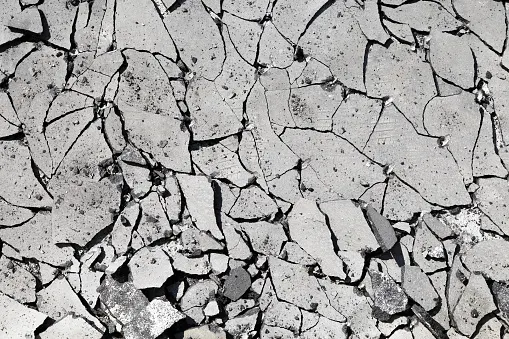Deterioration of Stones
What is the deterioration of stones?
What leads to the deterioration of stones?
- Deterioration of stones is the process of their breaking or their decay.
What leads to the deterioration of stones?
- The natural agents which contribute to their deterioration are rain, wind, heat, frost, etc.
- The chemical agents which contribute to their deterioration are smokes, fumes, etc.
 |
| Deterioration Of Stones |
So, the agents which deteriorate the stone are as follows:-
Vegetable Growth
- In the masonry joints, sometimes, roots of trees and weeds grow which keep the stones wet and also the secretion of organic and acidic matters by them cause the deterioration of stones.
- Dust particles of organic or non-organic origin may settle on the surface of the stones and penetrate into their pores. So, the bacteriological process starts when these particles come in contact with moisture or rainwater and the resultant micro-organism producing acids attack the stones causing their decay.
Frost
- In the cold places, frost pierces the pores of the stones where it freezes, expands and creates cracks.
- The resistance of stone against the frost increases with a decrease in porosity(pore volume accessible to water) of stone.
Rain
- Rainwater affects the stones physically as well as chemically.
- Wetting by rain and drying by sun alternately causes internal stresses in the stones and result in their disintegration.
- In industrial areas, the acidic rainwater reacts with the constituents of stones which leads to their deterioration.
- The decomposition of felspar(a group of mineral silicates) caused due to rainwater is as follows:-
where K2Al2O3.6H20 is Orthoclase
K2CO3 is Alkaline Carbonate
Al2O3.2SiO2.2H20 is Kaolinite
Al2O3.2SiO2.2H20 is Kaolinite
SiO2.nH2O is Hydrated Silicate
- Oxidation and Hydration processes also lead to the degradation of stones.
- For example- FeS and FeCO3 readily oxidize to limonite and liberates sulphur, which combines with water and oxygen to form sulphuric acid and finally to sulphates. Similarly, FeO is converted into Fe2O3 which combines with water to form FeO.nH2O and this chemical change is accompanied by an increase in volume and further results in the liberation of neighbouring minerals composing the rocks.
Salt Crystallization
- Crystallization of salts within the pores of stones can produce sufficient stresses in them which causes their cracking, often into powder fragments.
- Highly soluble salts such as NaCl and Na2SO4 cause powdering and crumbling of the stone's surface on crystallization.
- Less soluble salts such as CaSO4 form glassy, adherent films which cause spalling of the stone's surface.
Temperature Changes
- Due to frequent temperature changes, expansion and contraction cause deterioration of the stone especially if a rock is composed of several minerals having different coefficients of linear expansion.
Chemical Agents
- Deterioration of stones is caused by smokes, fumes, acids and acid fumes present in the atmosphere.
- Stones which contain CaCO3 and MgCO3 are affected badly.
Lichens
- Lichens destroy the limestone.
- By making a series of parallel vertical holes in limestones and sandstones, molluscs gradually weaken and destroy the stone ultimately.
Mutual Decay
- Mutual decay takes place when different types of stones are used together.
- For example, when sandstone is used under limestone, the chemicals brought down from limestone by rainwater to the sandstone will deteriorate it.
For Preservation Of Stones, Check- https://www.akhandduttaengineering.in/2020/07/preservation-of-stones.html
*Self Typed
*Source- Internet, Books and Self-Analysis